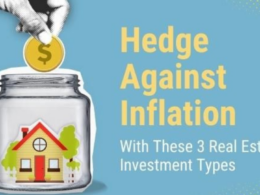Table of Contents
Discover effective methods for generating passive income and growing your wealth.
You don’t have to be rich to earn passive income. Anyone can create a passive income stream with some time and initial investment. Whether you work full-time or are retired and need extra money, there are ideas to boost your income. Passive income isn’t about getting money for doing nothing but about earning money with less effort. Some ways to earn passive income, like owning stocks or bonds that pay dividends, require less work than owning rental property. This guide explains how to start, how much you can earn, the effort needed, and different investments for passive income.
How to Start Earning Passive Income
There are many ways to start earning passive income, but deciding how much time and money you’re willing to invest first is important. Then, pick a passive income idea that matches your budget, skills, and interests.
Step 1: Choose your passive income streams. Decide if you want to invest for passive income or run a side business. It usually takes time to build up a steady income.
Step 2: Pick the right platform. Many financial companies and apps can help with investing. If you’re selling products online or doing affiliate marketing, you’ll need a website or social media platform. It takes more effort at the start but gets easier over time.
Step 3: Manage your expectations. Passive income from investments means predicting how much you’ll earn based on your investment. For example, a $5,000 investment with a 6% return will give you $300 annually. A successful affiliate website might make $1,000 or more each month.
Compare Top Investment Platforms
| Platform | Type | Account Minimum | Fees |
| Merrill Edge | Online Broker | $0 | No cost for stock trades. For options trades, there’s no charge per leg plus $0.65 per contract. |
| E*TRADE | Online Broker | $0 | Stock and ETF trades have no commission fees. Options trading costs between $0.50 and $0.65 per contract, depending on how much you trade. |
| Betterment | Robo-Advisor | $0%10 to start investing | No cost for stock trades. There’s no charge per leg plus $0.65 per contract for options trades. |
| Wealthfront | Robo-Advisor | Investment accounts cost $500, cash accounts cost $1, and financial planning is free. | Most accounts have a fee of 0.25%, and there are no fees for trading, withdrawals, minimums, or transfers. For 529 plans, the fee is between 0.42% and 0.46%. |
| Empower | Robo-Advisor | $100,00 | 0.49% to 0.89% |
Best Passive Income Investments
The best passive income investments involve considering your skills, time, and the amount of money you can invest.
Investing in financial markets includes buying stocks and bonds. Buying banking products like certificates of deposit and high-yield cash accounts is safer but may earn less than investing in stocks and bonds.
Passive investing in dividend-paying stocks or bonds can give you regular income, but you must invest more money to make a meaningful monthly income. Crowdfunding apps let you invest in projects like real estate and art to get ongoing income.
Different investments have different levels of risk. Low-risk options include money market funds and high-yield savings accounts. Stocks and bonds carry more risk because their value can increase. Crowdfunding apps also have risks like long lockup periods and less regulation than traditional investments.
Researching and understanding the risks before investing in any passive income opportunity is important.
Dividend Stocks
Investing in dividend-paying stocks means buying a piece of a company that shares its profits with shareholders. These payments, called dividends, usually come every three months. You can use the cash to buy more stocks or keep them. People who hold onto these stocks for a long time can make passive income. It’s a good way for long-term investors to earn regular money from their investments.
Investing in dividend-paying stocks is a way to earn money passively while having the potential for regular cash payments and growth in your investment.
Dividend Exchange Traded Funds
A dividend exchange-traded fund (ETF) is like a bundle of dividend-paying stocks in one investment. For example, the SPDR S&P Global Dividend ETF (WDIV) lets you invest in many companies that pay dividends. This ETF includes companies from all over the world, not just the U.S., and these companies often pay higher dividends. Many dividend ETFs pick companies that have a history of increasing their dividends.
Investing in a dividend ETF is another way to make passive income because you get regular cash payments. Plus, your investment can grow over time. Just be aware of any management fees that come with the ETF, as higher fees can reduce your overall returns.
Best Online Brokers For ETFs
| Company | Account Minimum | Fees |
| Fidelity | $0 | You can trade stocks and ETFs for free; for options trading, there’s a charge of $0.65 per contract. |
| Interactive Brokers | $0 | Trading stocks and ETFs on IBKR’s TWS Light platform comes with no commissions, while active traders using advanced features like order routing may pay low costs scaled by their trading volume. For options trading on TWS Light, $0.65 per contract is charged. This rate also applies to TWS Pro users based on their trading volume. Futures trading on the platform incurs a fee of $0.85 per contract. |
| Charles Schwab | $0 | You can trade stocks and ETFs for free, and for options trading, there’s a charge of $0.65 per contract. |
Bonds
Bonds are becoming popular again as interest rates go up. When you buy bonds, you lend money to a company or government. In return, you get regular interest payments, known as coupons. Bonds are great for earning passive income because if you buy a new bond at its starting price, typically $1,000, and hold onto it until it matures, you’ll get regular interest payments and your initial investment back.
Different bonds offer different interest rates. Bonds with lower credit ratings usually pay higher interest rates, while government and top-rated corporate bonds pay less.
Remember that bond prices can change, so if you sell before the bond matures, you might get more or less than what you paid. The bond’s credit rating shows how likely it is to default. Lower-rated bonds have a higher risk of default.
If you don’t want to pick individual bonds, you can invest in bond mutual funds or exchange-traded funds (ETFs) to earn passive income without much effort.
Sample bond types:
- Government
- Government agency bonds, like mortgage-backed bonds, represent loans made to government-backed entities.
- Corporate bonds are loans provided to companies by investors.
- Companies or entities issue high-yield or junk bonds with lower credit ratings.
- High yield (sometimes called junk bonds)
- Tax-exempt
Certificates of Deposit
Certificates of deposit (CDs) are a type of savings product banks offer. When you buy a CD, you deposit a specific amount for a set period, typically ranging from a few months to several years. In return, the bank pays you interest at a fixed or variable rate.
There are different types of CDs, including those with fixed interest rates and others with rates that can change over time. Investors who want regular income and keep their initial investment safe can create a CD ladder. With this strategy, they buy CDs at different times, and as each CD matures, they reinvest the money in a new CD. This can be a good way to increase income, especially when interest rates are expected to rise.
High Yield Savings Accounts
A high-yield savings account offered by a bank pays higher interest rates than regular savings accounts. It often requires a higher minimum balance to open and maintain.
If you want to earn passive income, consider opening a high-yield savings account. It’s a good option for earning extra money from funds you might need for short-term expenses or emergencies while keeping your money easily accessible.
To open a high-yield savings account, visit your chosen bank’s website and click the “open an account” button. You’ll need to answer some personal questions during the application process.
- Account Type (Individual or Joint)
- Home Address
- Identification Number
- Previous Addresses
- Current and potentially previous employer
- Money you owe
Money Market Accounts
A money market mutual fund is a type of investment that holds short-term debt from companies. It’s different from a bank account but works like a high-yield savings account. Many investors pool their money to invest in these funds, mainly short-term debt and similar cash-like assets. These funds aim to keep their share value stable at one dollar and often offer higher interest rates than regular bank accounts.
You can buy a money market fund through your investment brokerage account. These investments are easy to access and can be turned into cash within a few days. You can take out the interest earned as cash or reinvest it to grow your investment.
Compare Providers
| Provider | Best For | Key Benefit |
| Prime Alliance Bank | Best Overall | A competitive interest rate is offered for any amount you have in the account. |
| Patelco Credit Union | Best for Small Balances | Earn a higher Annual Percentage Yield (APY) for smaller account balances. |
| Axos Bank | Best for Debit Users | Enjoy full access to a debit card with no monthly fees. |
| Ally Bank | Best for Ultimate Flexibility | Easily access your funds online, at ATMs, through debit transactions, or via Zelle. |
| Synchrony Bank | Best IRA Options | Transfer your current IRA to an IRA money market account. |
Alternative Passive Income Ideas
Here are some alternatives to earning passive income besides stocks, bonds, and savings accounts. Real estate is a popular option but requires much effort and capital. Real estate crowdfunding or investing in REITs is more passive.
Creating an affiliate website can generate passive income online, but it requires ongoing work. Renting out property on Airbnb can be semi-passive with the right management team.
Cash-back credit cards and shopping sites might seem like passive income, but you’re spending money to earn it.
Selling digital products like e-books, courses, or apps can generate passive income, but it requires a lot of time and money upfront with uncertain returns.
Consider these alternatives to passive income to see if any fit your goals and resources.
REIT Investing
A real estate investment trust (REIT) is a group investment in different real estate. Some REITs invest in many properties, while others focus on specific ones, such as senior housing, warehouses, or shopping malls.REITs are good for regular cash payments because they must give most of their profits to shareholders.
Peer-to-Peer Lending
Debt investing is becoming more popular, especially with platforms that let regular people lend money to others. Apps like Groundfloor let you lend money to people buying real estate, while other platforms connect borrowers with lenders for different financial needs.
These peer-to-peer lending apps offer higher interest rates than traditional investments like stocks and bonds. However, they also come with more risk because if borrowers don’t repay their loans, it can affect their returns. You can choose higher-quality loans to reduce this risk and spread your money across many loans.
Affiliate Marketing
Affiliate marketers sell products and services on their websites or social media accounts and get paid a commission for each sale. They often write reviews to attract visitors to their sites. Setting up affiliate marketing requires creating a website or social media platform, making deals with companies, and writing content to bring in visitors.
The passive part of affiliate marketing is that once you have content and a steady flow of visitors to your site, your workload decreases. But you still need to create new content and update old content to keep increasing your website traffic. It can also take several months to start making money. Affiliate marketing requires more effort compared to other passive income ideas.
Best Alternative Investing Platforms
| Platform | Focus | Minimum Investment |
|---|---|---|
| Fundraise | Investing in properties or land. | $10 |
| Masterworks | Investing in artwork or artistic pieces. | $10,000 |
| Yieldstreet | Variety of assets | $2,500 |
| iTrustCapital | Gold and digital currency | $1,000 |
Factors to Consider When Choosing Passive Income Streams
Capital
All passive income ideas require some initial money to start. You’ll need a good amount of money saved up to make a significant passive income from savings accounts, stocks, or bonds. For example, if you have $100,000 to invest and find an investment that pays a 5% dividend or interest, you could earn $5,000 per year in passive income.
Affiliate marketing is different. While it doesn’t require a lot of money upfront, it requires a lot of time and effort to set up and maintain.
Risk
All investments have some level of risk. When you put your money in certificates of deposit or high-yield cash investments, you’re less likely to lose the initial amount you invested. Still, over time, inflation could decrease the value of your money. Investing in riskier assets like dividend-paying stocks involves losing some or all of your initial investment, especially if the companies you invest in reduce or stop paying dividends. Crowdfunding investments for passive income are less regulated, meaning there’s a higher risk of losing money if the project fails or the crowdfunding platform goes out of business. Your money might be tied up for longer periods.
Taxes
Except for certain municipal bonds tax-exempt in your state, the government taxes all income you earn from investments. It’s important to consider how much of your income will be left after taxes, so make sure you know how your investment will be taxed and what tax bracket you’re in. Different types of income, like dividends and interest payments, might have their tax rates.
Key Differences Between Stocks and Alternative Investments
| Stocks | Alternatives | |
| Liquidity | Very easy to buy and sell quickly; you can trade anytime during the day. | They may have restrictions that keep your money invested for several months to a few years. |
| Fees | Trading is usually free with most brokerages, and the fees for ETFs and mutual funds are typically less than 1.0%. | Fee structures vary from simple to complex across different investment platforms. Some platforms offer low-fee alternative investments, while others have more complex fee structures that may include additional fees based on performance. |
| Minimum investment | You can purchase fractional shares of stocks and ETFs on various investment platforms for as little as $10. | Platforms are open to both accredited and non-accredited investors, with minimum investment amounts ranging from as low as $10 to four to five figures. |
| Correlation | Stocks from different sectors and regions can behave differently. When these stocks have low correlations, they don’t all move in the same direction simultaneously. This can make your investments more stable because they’re not all affected by the same factors. | Stocks from different sectors and regions can behave differently. When these stocks have low correlations, they don’t all move in the same direction simultaneously. This can make your investments more stable because they’re not all affected by the same factors. |
FAQs
1. What’s the Difference Between Active Income and Passive Income?
Ans: Active income is what you earn by working, like a regular paycheck or doing tasks like food delivery or freelance work. Passive income is earning without actively working, like getting royalties from a book or stock dividends. Some passive income ideas, like investing in stocks, need minimal effort, while others, like managing rental properties, require more work.
2. How Can You Make Passive Income With Little to No Money?
Ans: You can make passive income with little money by making and selling digital stuff like online courses, apps, and e-books. Sell books on Amazon and other items on social media or your online shop.
If you have a job with a retirement plan like a 401(k), you can put some of your paycheck into it and invest in stocks. When you retire, you’ll have money to make passive income.
3. Can You Live Off of Passive Income?
Ans: Yes, you can rely on passive income to support yourself. It’s easier if you live in a place where things are cheaper. You’ll need a big amount saved to live off the money you get from investments. For example, if you want $30,000 a year, you need $600,000 invested, earning 5% each year.
Selling digital stuff or doing affiliate marketing can also bring in enough money to live on, but you’ll need to make a few thousand dollars monthly.
Usually, older folks who’ve saved up a lot of money can live off passive income. But there are exceptions, like people who made a lot of money when they were young and keep making more with their investments.
4. How Do You Pick the Right Passive Income Idea?
Ans: To choose the best passive income option, consider your time, your tolerance for risk, and your ability to invest. Also, consider your skills to find the right fit.
The simplest way to begin investing for future passive income is to start with a small amount and set up automatic investing.
5. Who Should Consider Passive Income Streams?
Ans: Everyone needs to think about investing for the future. When you’re older, having a passive income can be helpful. If you’re young and driven, thinking about ways to make passive income is smart. Jobs can be uncertain, so having multiple ways to make money is a good idea for your finances.










